Physical Address
304 North Cardinal St.
Dorchester Center, MA 02124
Physical Address
304 North Cardinal St.
Dorchester Center, MA 02124
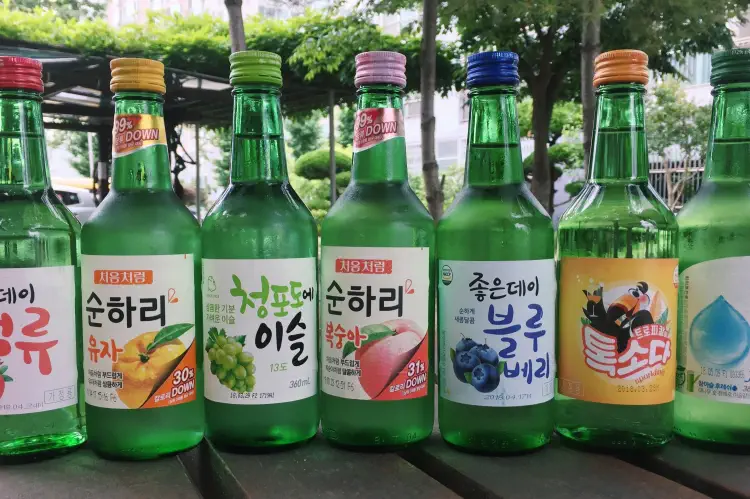
As a national alcoholic drink of Korea, soju is a beverage regularly consumed. It’s no surprise that nowadays, some of the best soju flavours range from peach to watermelon and even Lychee. It’s one of Korea’s most beloved beverages, loved by people of all ages and socioeconomic backgrounds. Soju has been consumed by people for hundreds of years, giving it a deep and varied history. Traditionally, soju traces its roots back to the 13th century during the Mongol invasions, where the distillation techniques were introduced to Korea from Persia. Originally distilled from rice, the methods adapted over centuries to include other grains like wheat and barley, especially during rice shortages. This shift was pivotal in shaping soju’s reputation as Korea’s staple spirit. By the 1960s, modern distillation processes refined its production, allowing for a more consistent taste and the commercialization that spread its popularity across the nation. The harmonious blend of traditional methods and modern innovation gave soju its distinct place in Korean culture. In this article we’ll check out some of the best soju flavours available, but first lets find out what soju is and how this sweet drink came to be!
Traditionally consumed with meals to complement other soju flavours, it’s also a staple of many festive occasions where people come together to celebrate. Soju is well-liked for its adaptability; it can be consumed on its own or as a component of other drinks or even cocktails. The alcohol percentage of soju ranges from about 12.9% to 53% alcohol by volume (AB), although there has been a growing popularity of low alcohol soju below 20% since 2007.
The first known production of soju occurred during the Mongol invasions of the 13th century . A variety of cereal grains including rice, wheat, and barley were used to produce the drink back then. But it wasn’t until the modern distillation process was introduced in the 1960s that Soju became the national drink of Korea.
Major companies like Jinro, Lotte, and Hite-Jinro all produce Soju now. With a share of the Korean Soju market of over 50 percent, Jinro is by far the industry leader. Other well-known producers include Lotte and Hite-Jinro. Not only is soju popular in the United States, Japan, and China, but it is also exported to a wide variety of other countries.
Related Post: Best Korean Beers
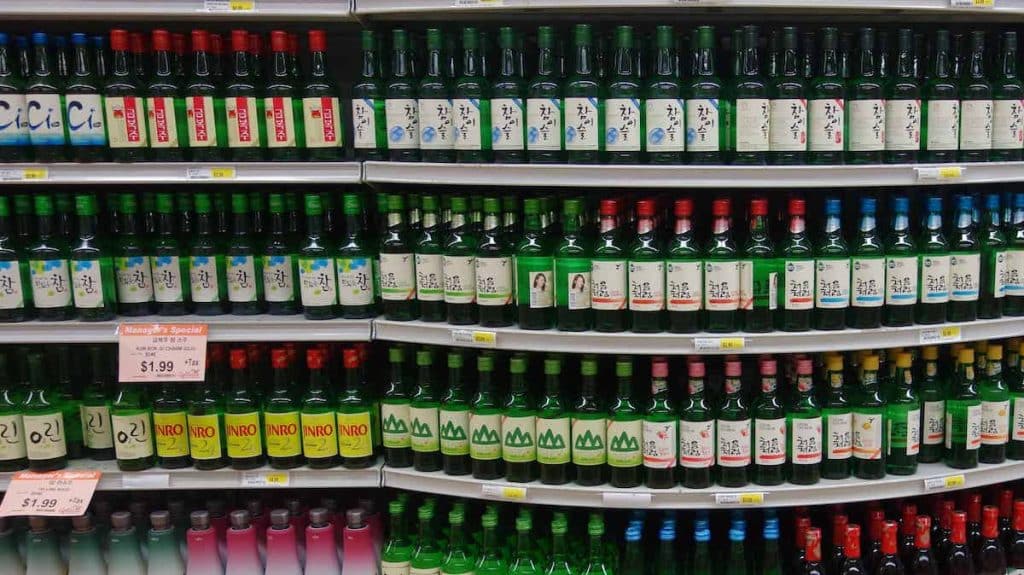
Soju is a versatile beverage that can be used not only for drinking, but also in cooking. Its unique flavour has a hint of sweetness that’s perfect for adding many fruity flavours. The alcohol-infused juice can add depth and complexity to a variety of dishes. Here are a few ways Soju can be used in cooking:
It is important to note that when cooking with Soju, the alcohol content may not completely cook off. Therefore, it is best to use Soju in moderation and to avoid using it in dishes that will be served to children or those who cannot consume alcohol.
Related Post: 4 Weird Foods To Try In South Korea
Various brands of soju present a wide array of flavours to choose from. The most commonly found ones are the original, blueberry, grapefruit, peach, and green grape. However, for those seeking a unique taste, there are flavours such as strawberry, plum, melon, cherry, and even cultured milk or yogurt.
For those new to the world of soju, the green grape flavour is a great starting point. Its refreshing taste pairs well with light dishes such as salads and white meats like chicken or fish. This flavour is not overly sweet or harsh, making it an ideal choice for beginners who prefer a drink that isn’t excessively sweet.
The alcohol content in soju can range from approximately 12.9% to 53% alcohol by volume (ABV). However, since 2007, low-alcohol soju, with less than 20% ABV, has gained popularity. While the Andong region is known for producing most soju brands, there are also soju variants produced in other regions and countries.
Soju, often dubbed as the “Korean vodka,” holds the title for the most consumed alcohol globally. As per The Spirits Business, Jinro Soju recorded sales of 86.3 million cases in 2019, surpassing all other liquor brands.
Despite its seemingly mild composition of sweet potatoes and rice, soju can lead to intoxication when consumed beyond one’s tolerance. The alcohol content of soju can range from approximately 12.9% to 53% alcohol by volume (ABV), noting that since 2007, low-alcohol soju, with less than 20% ABV, has become notably popular. Typically, five to seven shots of soju can induce drunkenness. Consuming more than this can result in unpleasant symptoms like dizziness, nausea, and dehydration, all signs of a hangover.
The availability of imported Soju has increased in recent years, allowing more people to sample this traditional Korean beverage. Soju has quickly become a popular option for patrons seeking something different on the drinks menus of a wide variety of establishments in major cities.
In Korea, you can buy Soju in supermarkets, convenience stores, and liquor stores. It is widely available and relatively inexpensive, with prices ranging from around 1,000 to 10,000 Korean won per bottle depending on the brand and size.
In Europe, the availability of Soju can vary depending on the country and region. However, it is becoming more popular and can be found in specialty Asian supermarkets or online stores that specialize in Korean products. In major cities, there may be bars or restaurants that serve Soju, and it may also be available at Korean cultural events or festivals.
In recent years, there has also been an increase in the availability of imported Soju in Europe, with major brands such as Jinro and Lotte being sold in some countries. Some online retailers also offer international shipping for Soju, making it easier for those outside of Korea to enjoy this traditional Korean drink.
It is worth noting that the availability and pricing of Soju can vary greatly depending on the country and region. It is always a good idea to check with local stores or online retailers to see if Soju is available and at what price before making a purchase. Additionally, some countries may have restrictions on the import and sale of alcohol, so it is important to check local laws and regulations before buying Soju.
Related Post: AREX Train Schedule
Soju is a drink that can be enjoyed by anyone, whether they are seasoned connoisseurs or curious about trying something new. Soju comes in a wide variety of flavours, so go ahead and try them all out to see which one you like best!
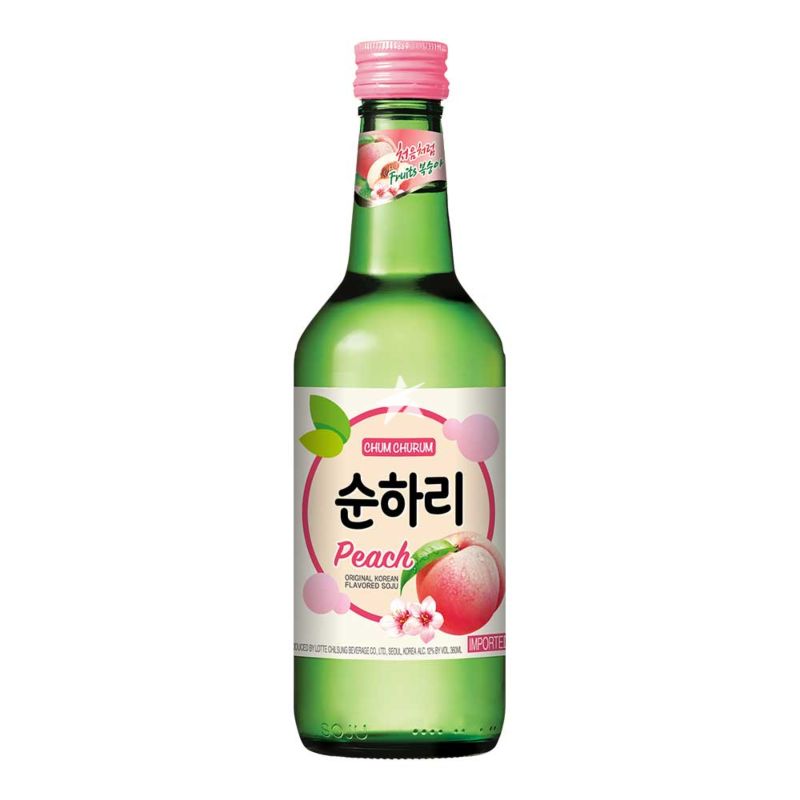
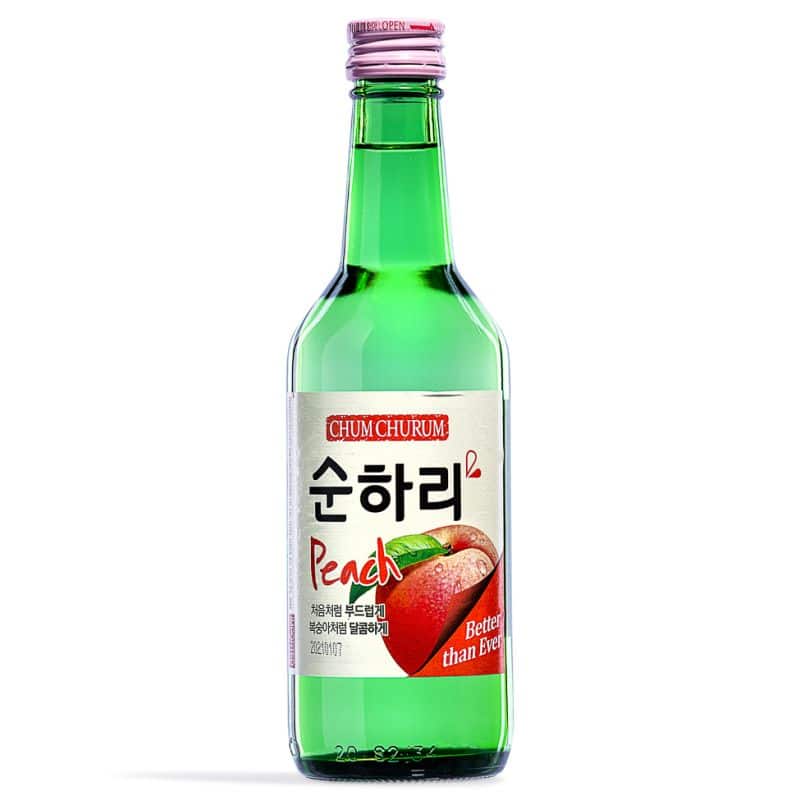
Peach has long been a popular flavour addition to alcoholic beverages, and peach soju flavour is no exception. With just the right amount of sweetness, peach soju has a unique flavour profile. Peach soju’s subtle, refreshing flavour works wonderfully with fiery dishes. Also a great choice for those who prefer a sweeter taste.
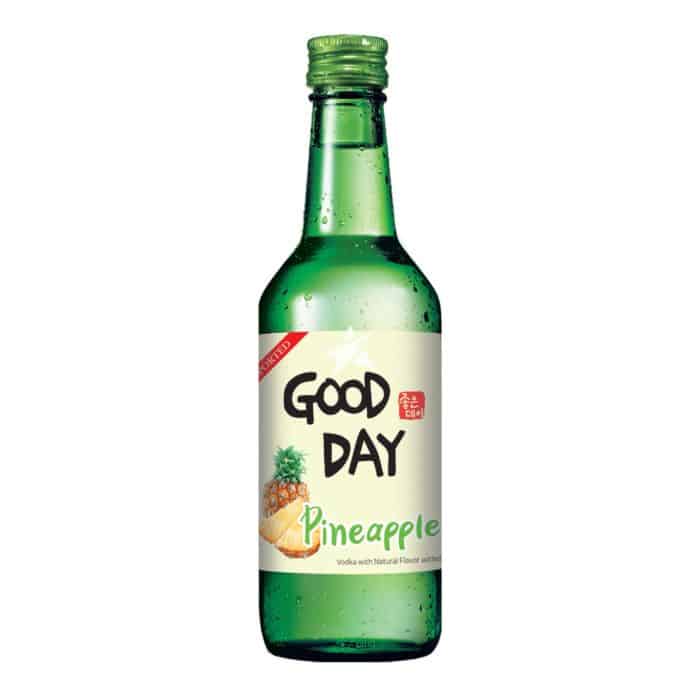
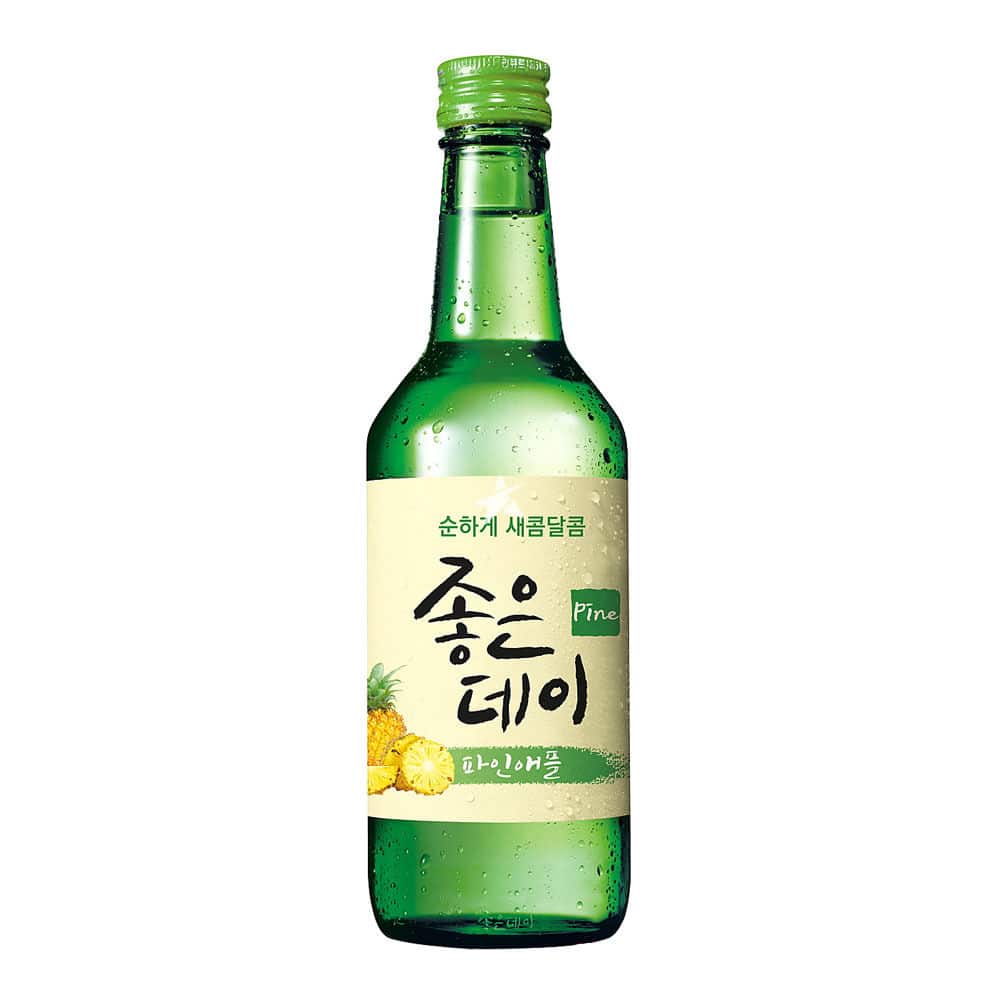
A smooth and mild alcoholic beverage, the soju pairs wonderfully with the pineapple aroma and distinctive sweetness. Nice aroma and flavour, but with a hint of artificiality. Nonetheless, it’s in the middle and not bad at all. The perfect drink for those who want to feel like they are on a tropical island.
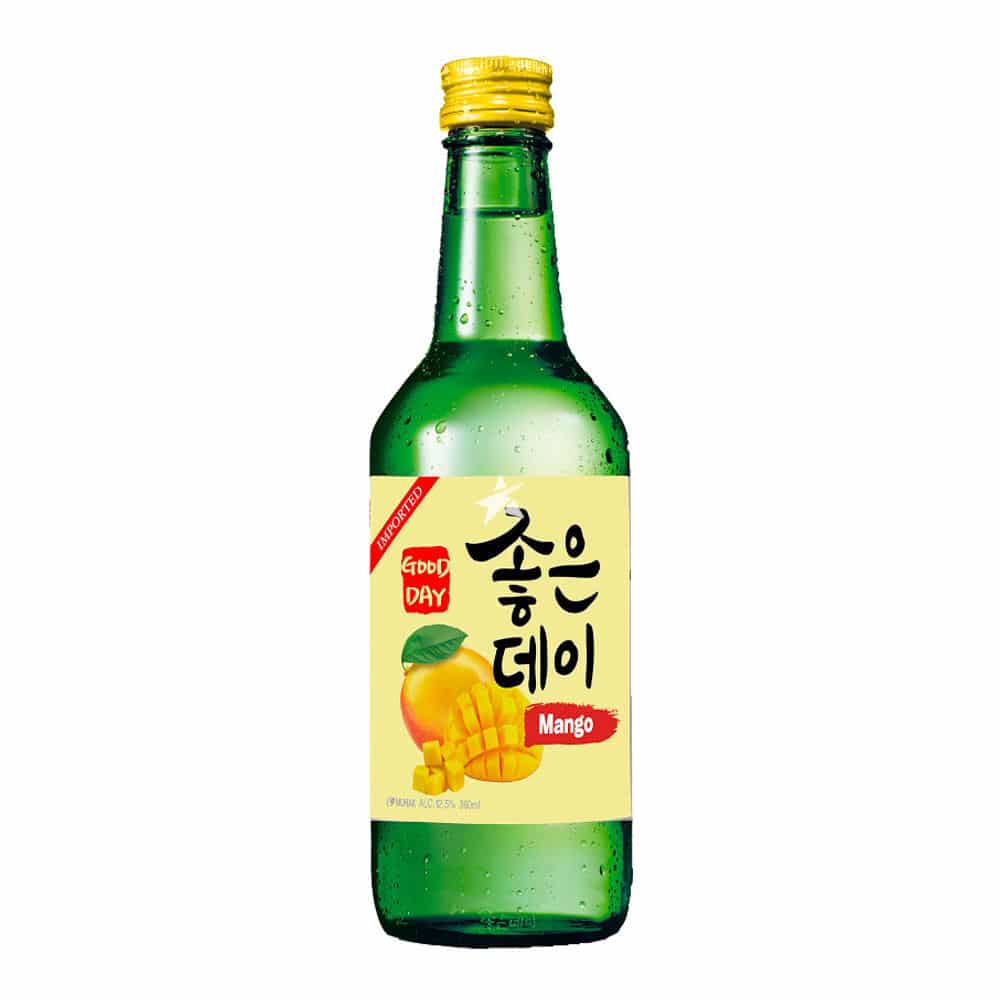
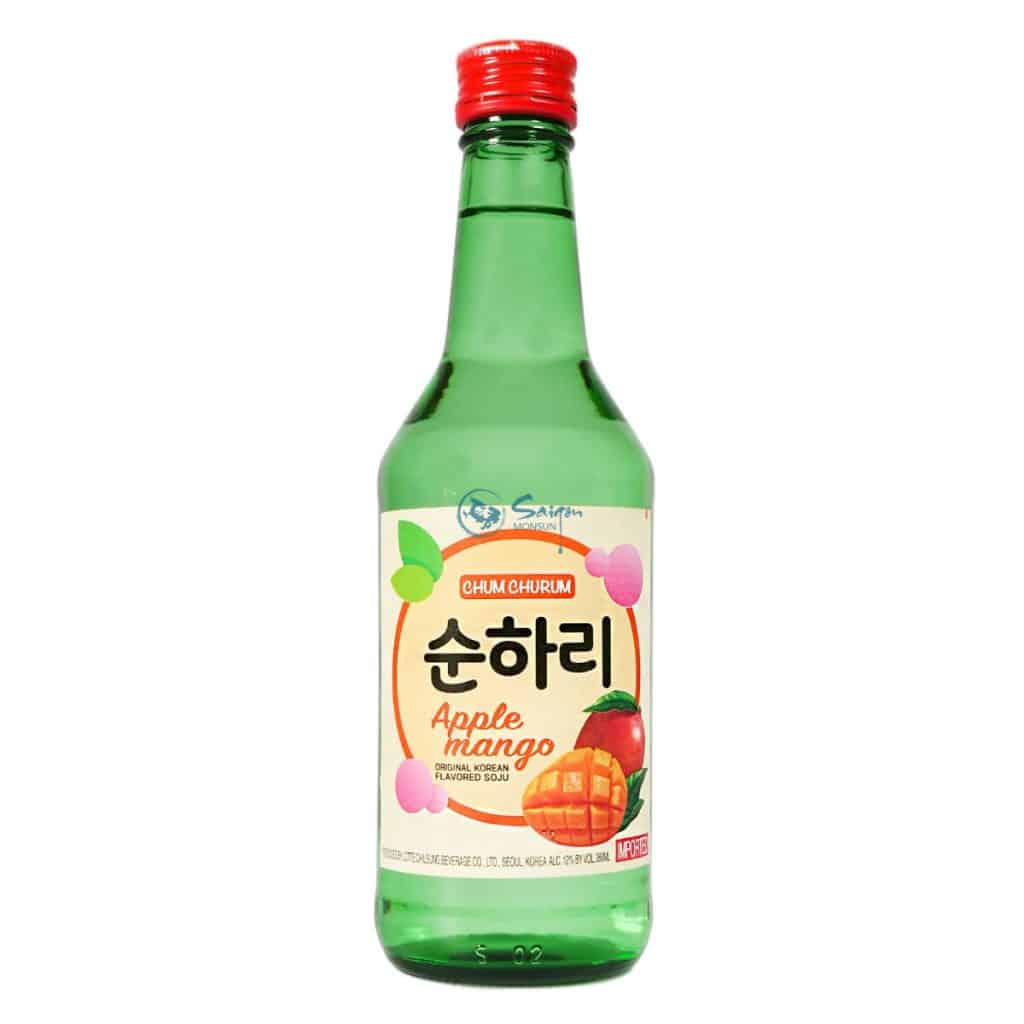
If you’re looking to sweeten up your Soju experience with a touch of fruitiness, try some Mango Soju. The adaptability of Mango Soju is unquestionably one of its best features. It’s versatile enough to be drunk neat, blended into other drinks, or used as a cocktail base in any number of ways. Mango Soju Margaritas, Mango Soju Mojitos, and Mango Soju Sangrias are a few examples of well-liked Mango Soju cocktail recipes. Mango Soju’s sweet and fruity flavour makes it an excellent mixer with other fruit juices like pineapple or orange juice, as well as with soda or tonic water for a light and refreshing spritzer.
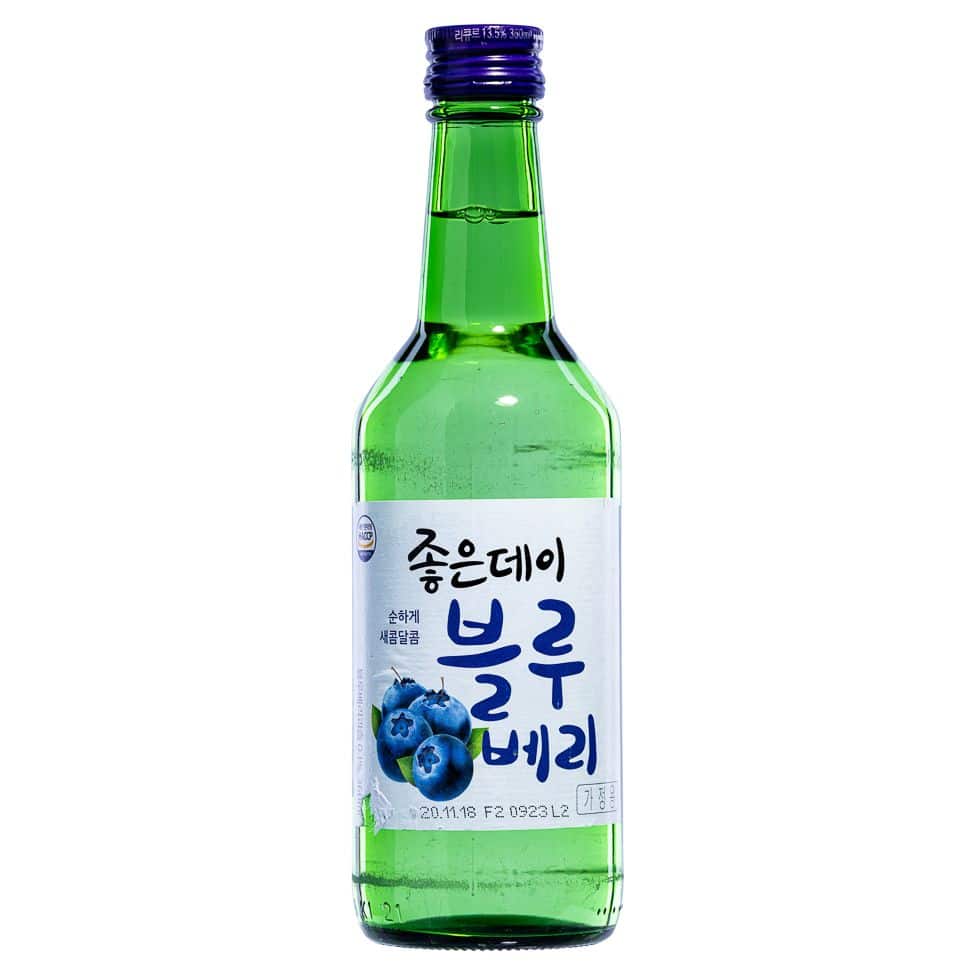
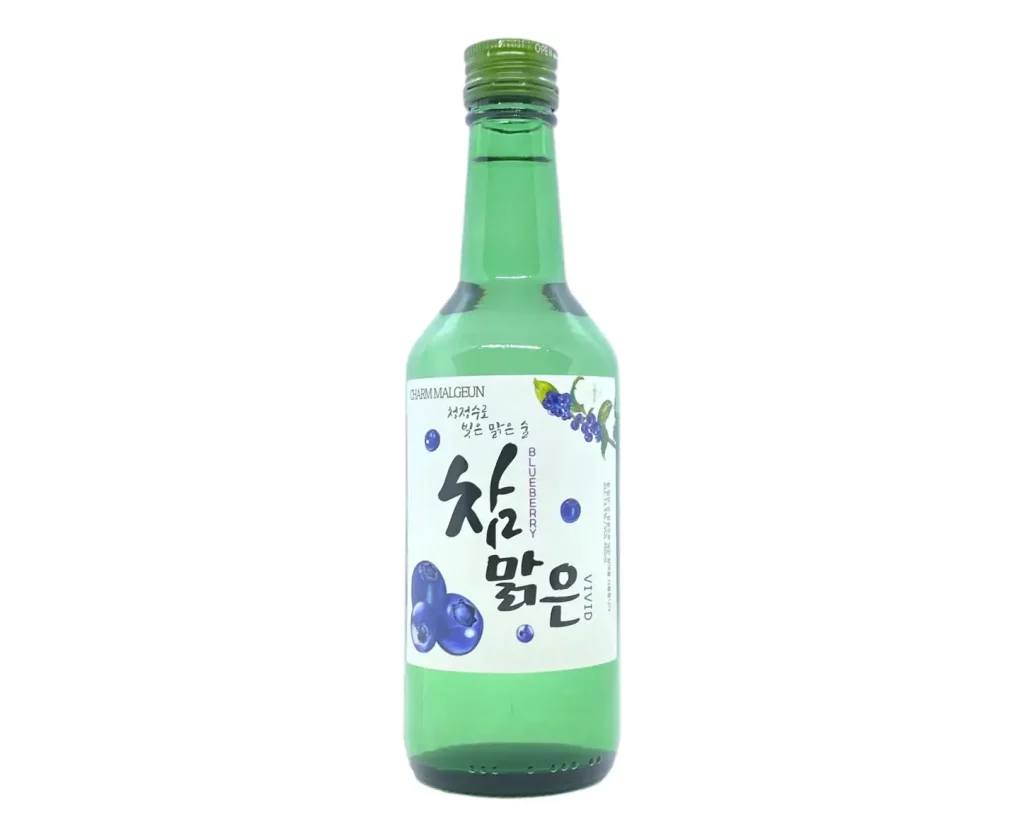
Blueberry Soju is also a great base for cocktails, and can be mixed with other fruit juices, such as cranberry or pomegranate juice, for a refreshing and fruity drink. Some popular Blueberry Soju cocktail recipes include Blueberry Soju Lemonade, Blueberry Soju Cosmo, and Blueberry Soju Spritzer.
Some popular food pairings with Blueberry Soju include sushi, poke bowls, grilled shrimp or salmon, and green salads with citrus dressing. The light and refreshing flavour of Blueberry Soju can help to cleanse the palate between bites of rich or spicy foods, making it a great option for multi-course meals.
Blueberry Soju flavour has a subtle sweetness makes it a great pairing for a variety of dishes, especially those that are light and fresh. So, why not try some Blueberry Soju with your next meal and see how its delicious flavour can enhance your dining experience?
Related Post: Alcohol To Try In South Korea
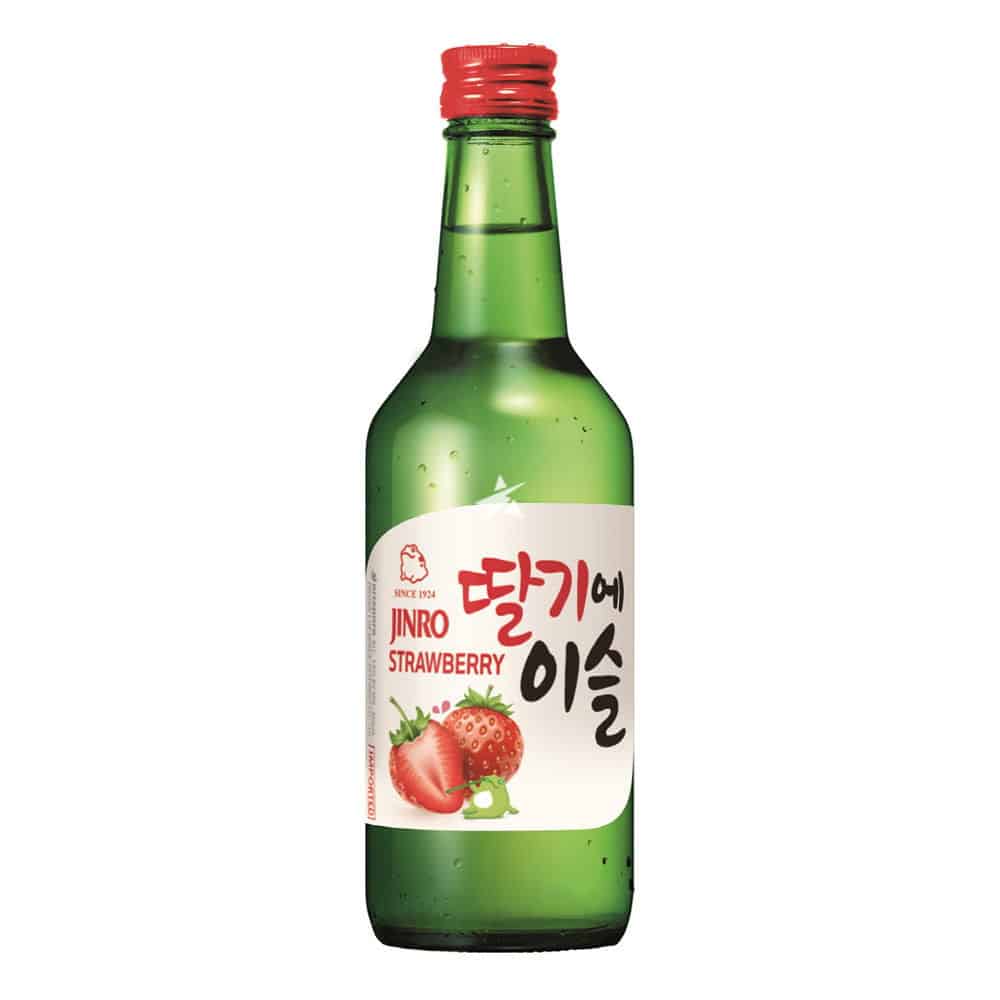
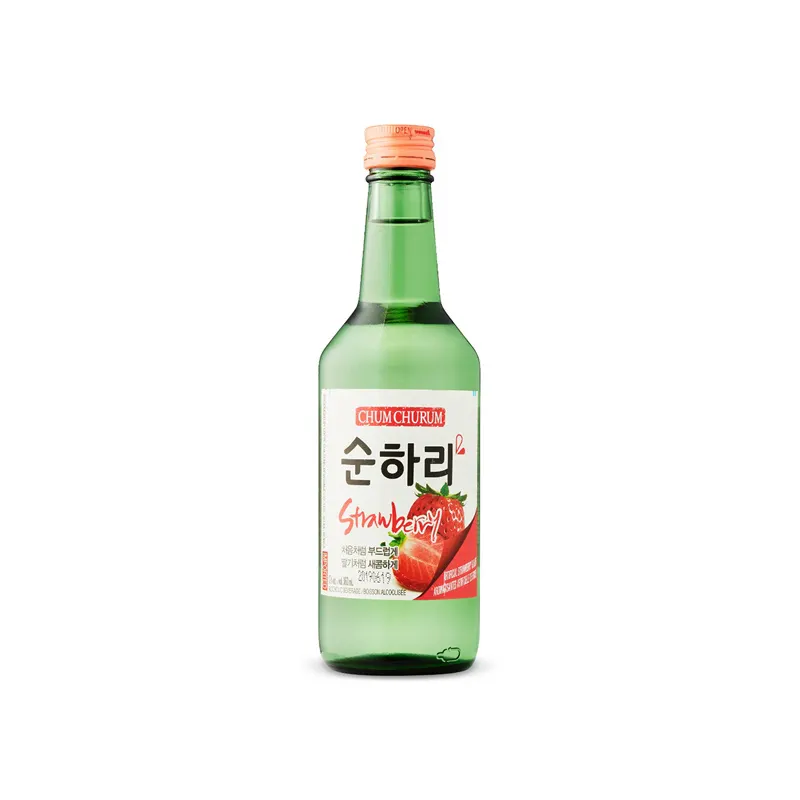
Strawberry Soju, like other fruit-flavoured Sojus, is both sweet and sour. This deliciously refreshing drink is made by infusing natural strawberry flavour into the classic Soju. Strawberry Soju’s adaptability is one of its many great features. It’s versatile enough to be drunk neat, blended into other drinks, or used as a cocktail base in any number of ways. Strawberry Soju Margaritas, Strawberry Soju Martinis, and Strawberry Soju Lemonades are just a few of the many delicious cocktail recipes that feature this fruity liquor.
Strawberry Soju flavour can be mixed with anything from fruit juice to soda to tonic water. Strawberry Soju is versatile enough to serve as the foundation for slushies and smoothies, making it an excellent choice for warm-weather get-togethers.
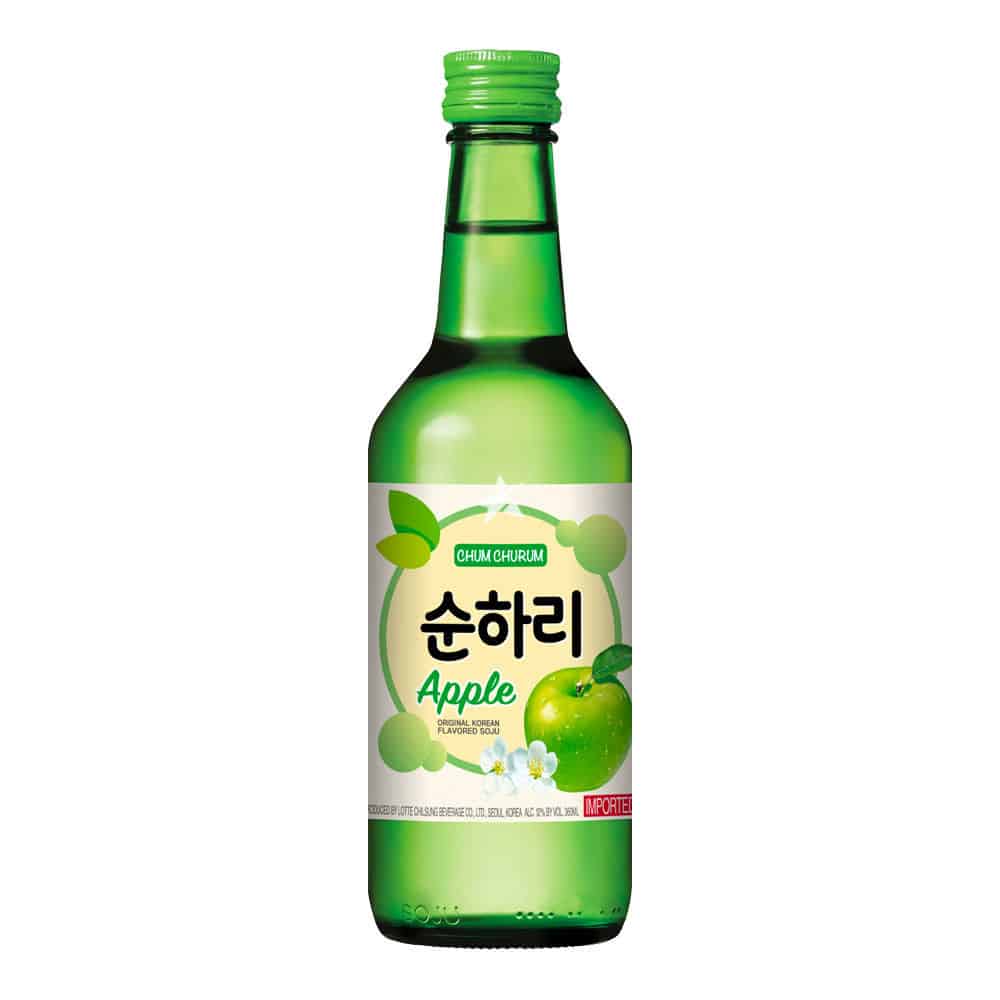

Apple Soju is a fruit-flavoured variant of Soju that has become increasingly popular in recent years. It offers a refreshing twist to the traditional Soju, with its crisp and sweet taste that is perfect for any occasion.
Apple Soju is made by infusing natural apple flavour into the traditional Soju, creating a deliciously refreshing drink. The apple flavour is light and crisp, making it a great option for those who prefer milder flavours or those who are new to Soju.
The crisp and sweet taste of Apple Soju pairs well with a variety of foods, especially those that are light and fresh like salads and seafood.
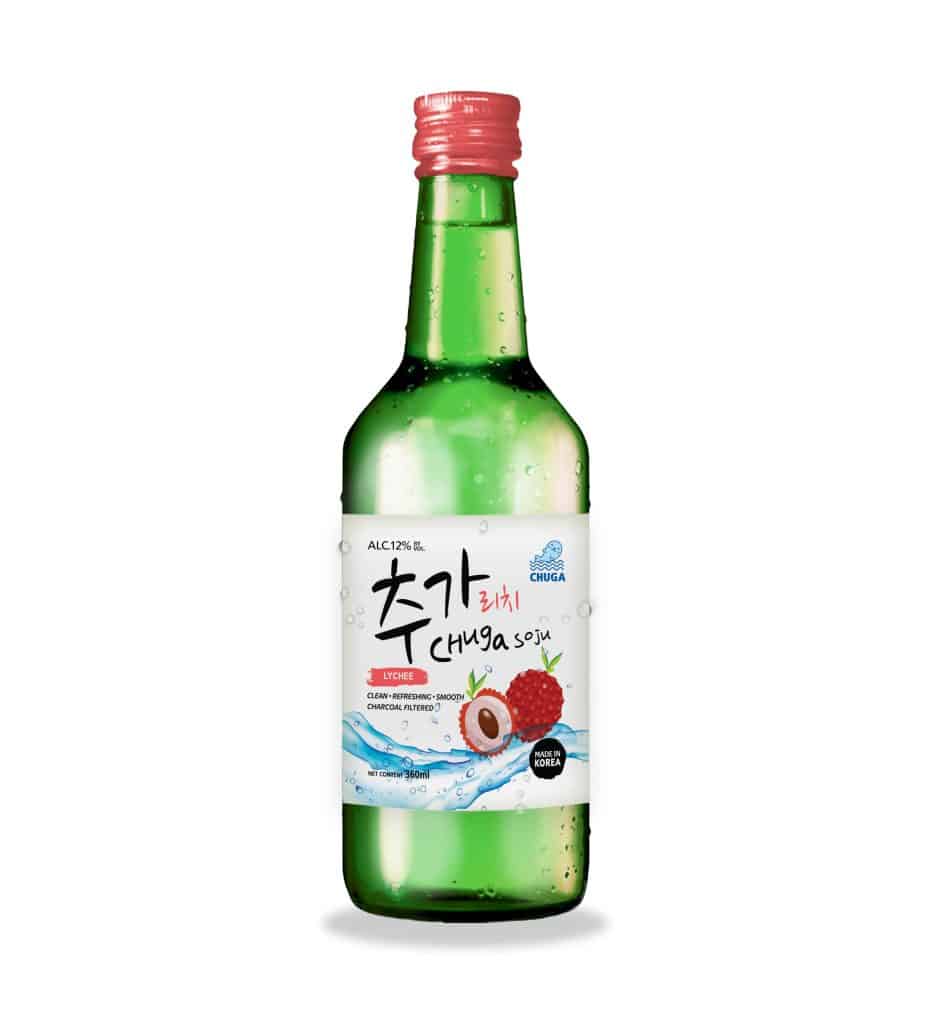
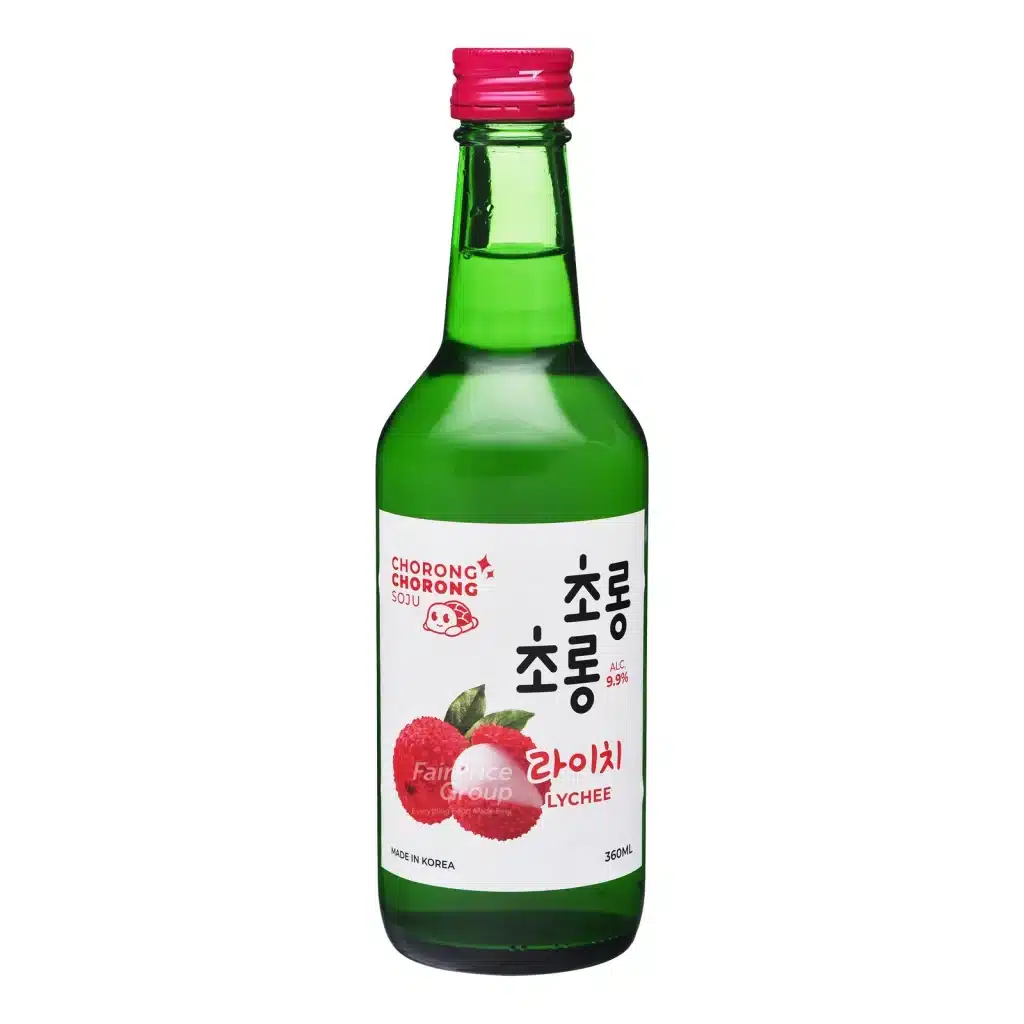
East Asias famous fruit gets its turn, the Lychee Soju flavour has a light and sweet taste. The traditional Soju is sweetened and mellowed by the addition of natural lychee flavouring, making it ideal for those with more refined palates. Lychee Soju can be consumed on its own, combined with other drinks, or used as a cocktail mixer. It complements many dishes, but especially those that are simple and fresh. The subtle sweetness of the lychee is best appreciated when the soju is served chilled or over ice.
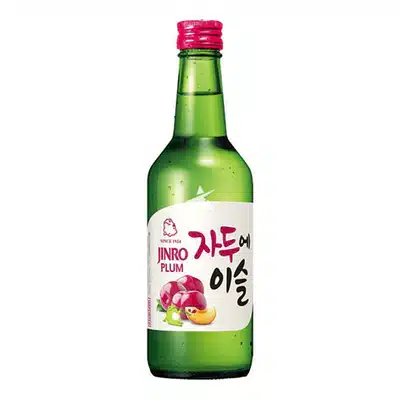
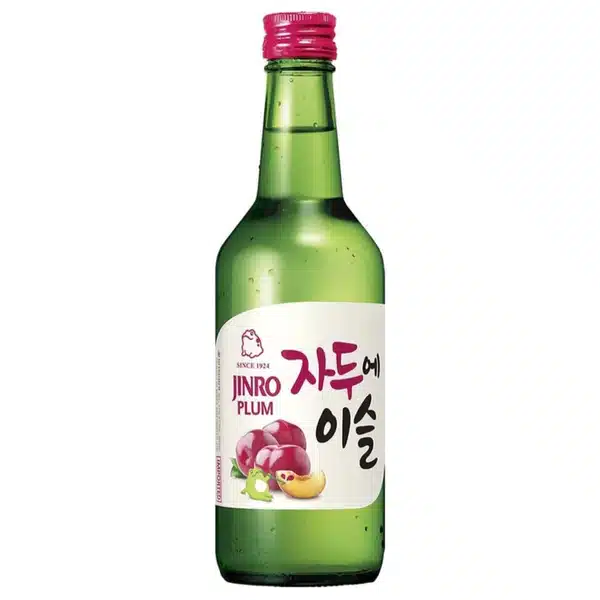
This soju is made with traditional rice, barley, and tapioca spirits, mixed with sugars and real plum juice. It has a smooth and fruity flavour with a hint of sweet plum and is refreshing to drink straight, with ice, or mixed with soda.
Similar to plum wine, it has a delicate yet fragrant palate that pairs well with Korean or East Asian cuisine. It is popular in Korea for its low alcohol content and versatile taste. Enjoy this bottled soju for a fruity and refreshing evening beverage.
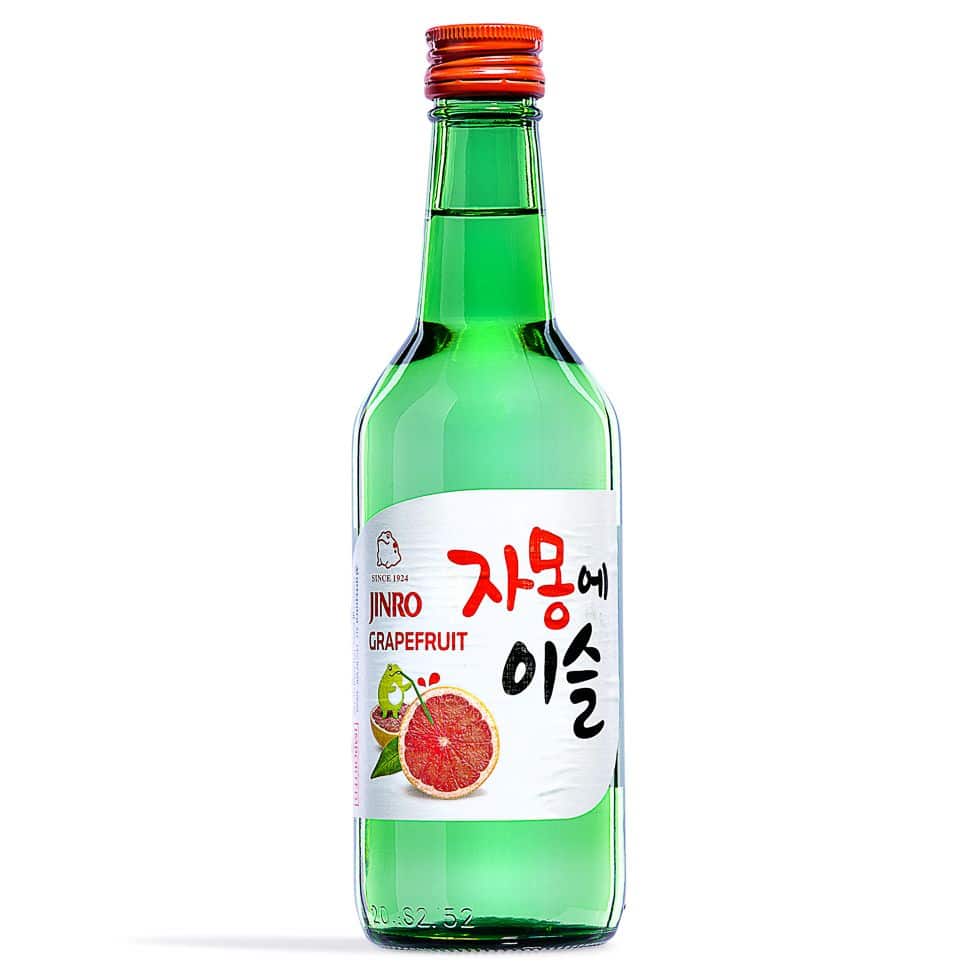
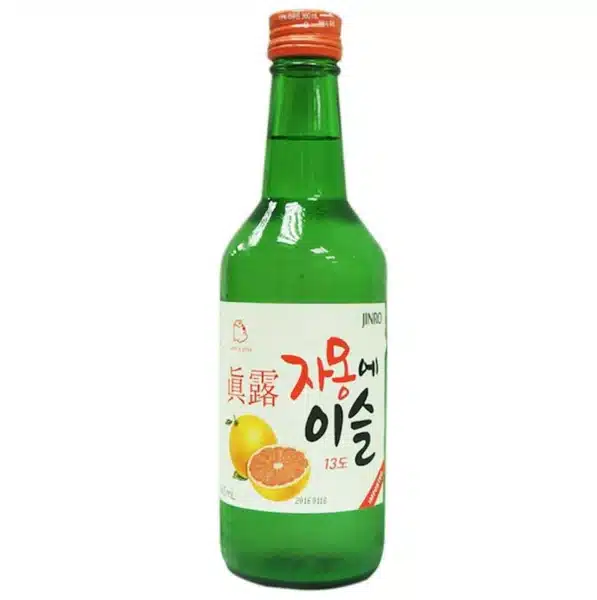
Grapefruit Soju is a variety of Soju with a zesty and invigorating flavour. This drink is prepared by infusing natural grapefruit flavour into traditional Soju, creating a zesty and delightful beverage. Grapefruit Soju is at its most refreshing when served cold or over ice, which brings out the drink’s naturally tart flavour.
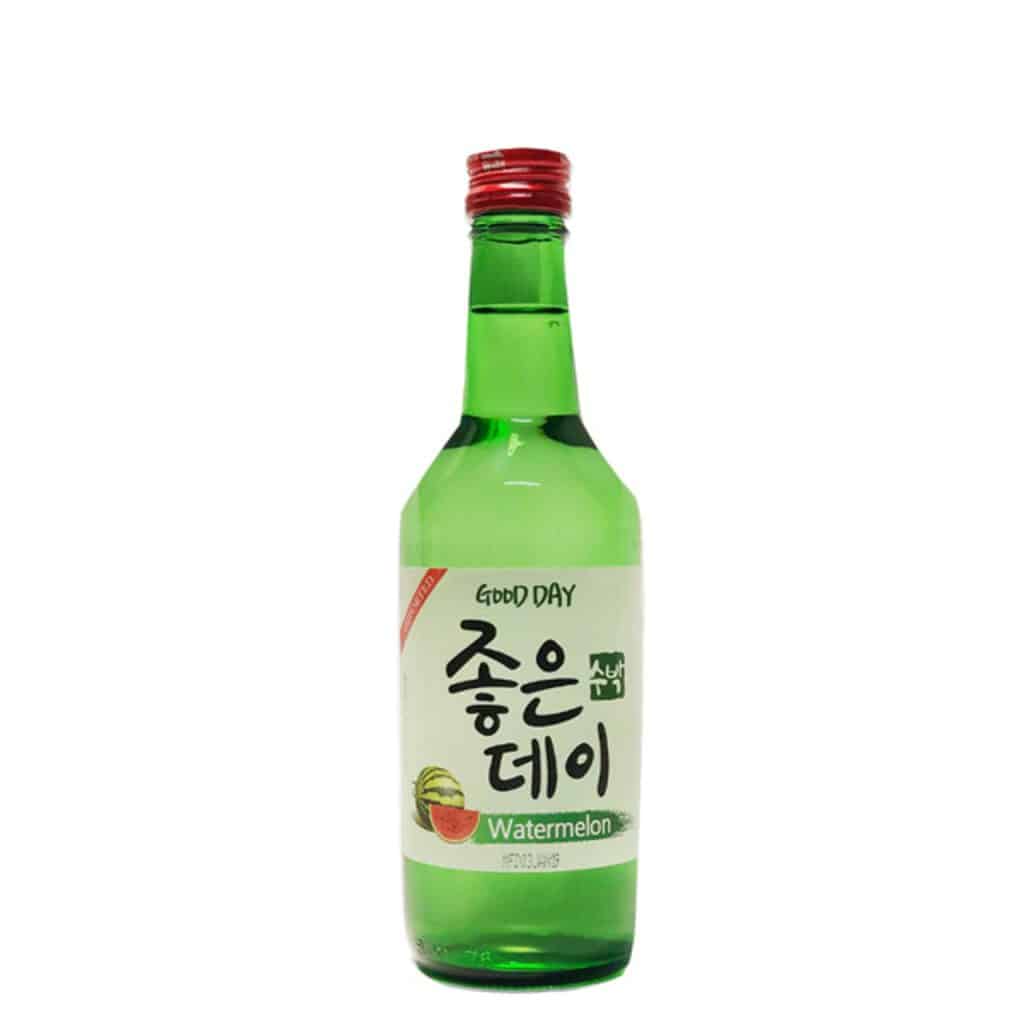
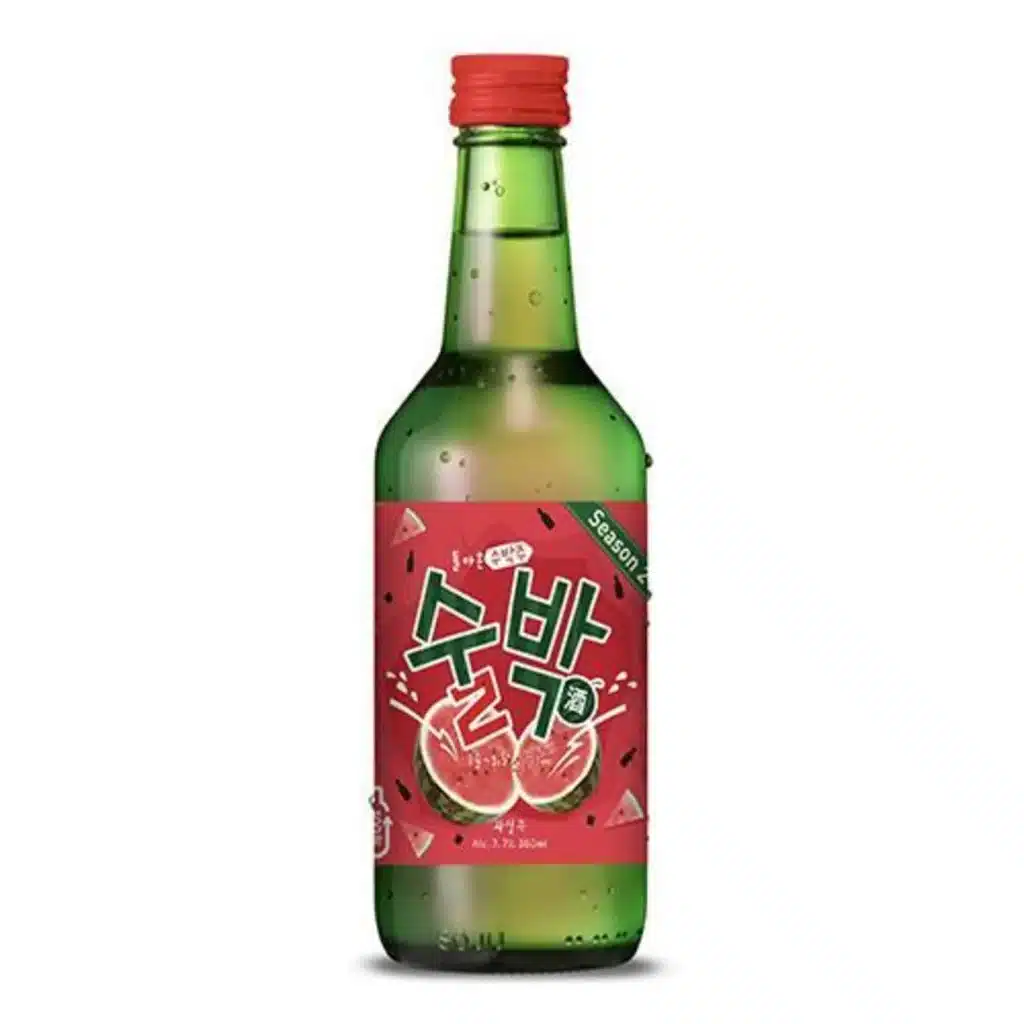
Juicy and delicious, watermelon is the ideal summertime soju flavour. Soju is infused with natural watermelon taste for a refreshing drink that may be enjoyed year-round. You may drink watermelon Soju by itself, combine it with other drinks, or use it as a cocktail mixer. It complements many dishes, but notably ones that are simple and fresh. Adding ice or chilling the watermelon Soju brings out the drink’s natural sweetness and enhances the tangy, refreshing flavour.
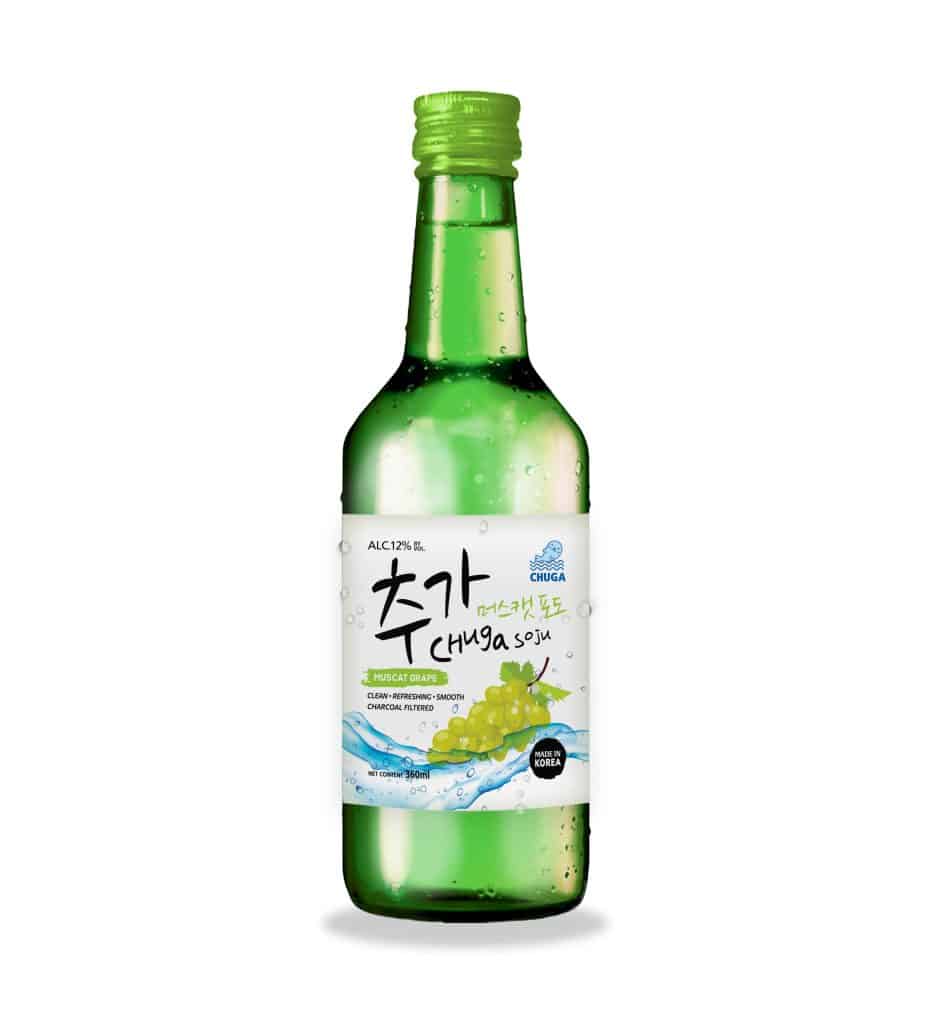
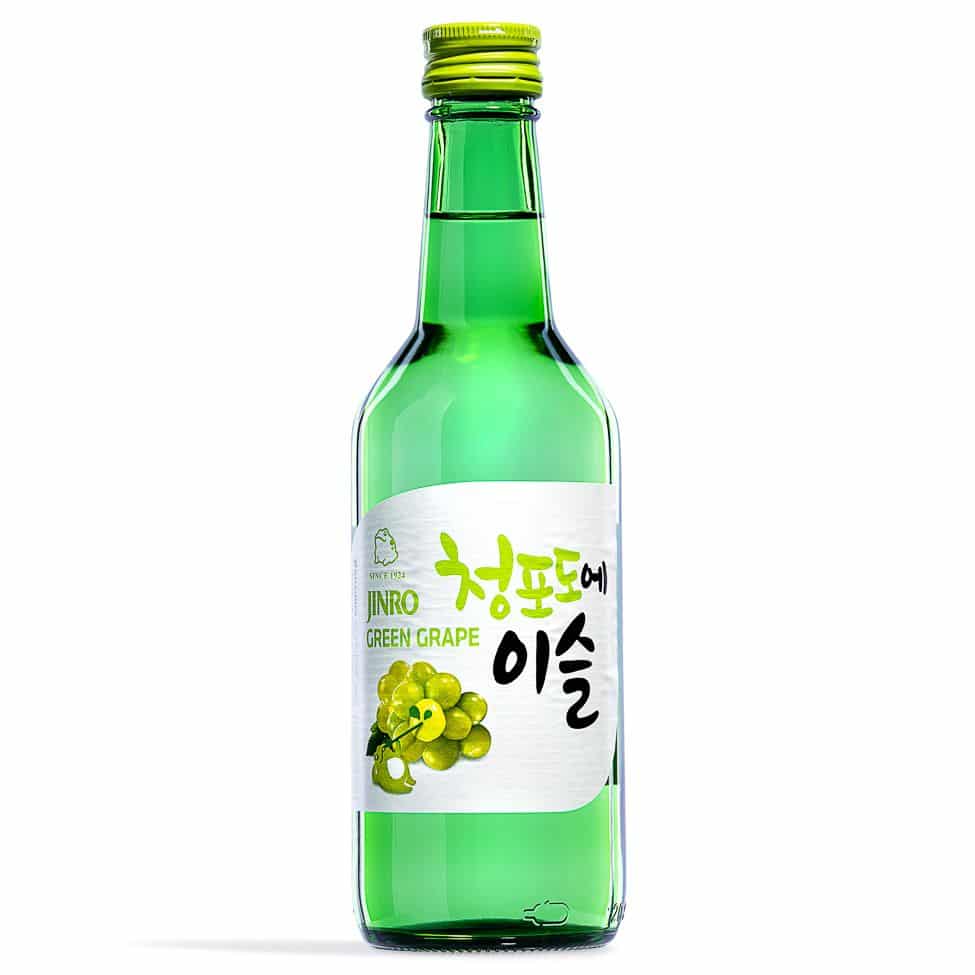
Green Grape Soju flavour is a fruit-flavoured kind of Soju that is light and refreshing. A natural green grape taste is infused into the original Soju, creating a crisp and clear alcoholic beverage that is great for individuals who like lighter cocktails. Green Grape Soju is versatile enough to be sipped alone, blended into other drinks, or used as a cocktail mixer. It complements many dishes, but notably ones that are simple and fresh. Serve Green Grape Soju cold or over ice to fully appreciate its refreshing, fruity taste.
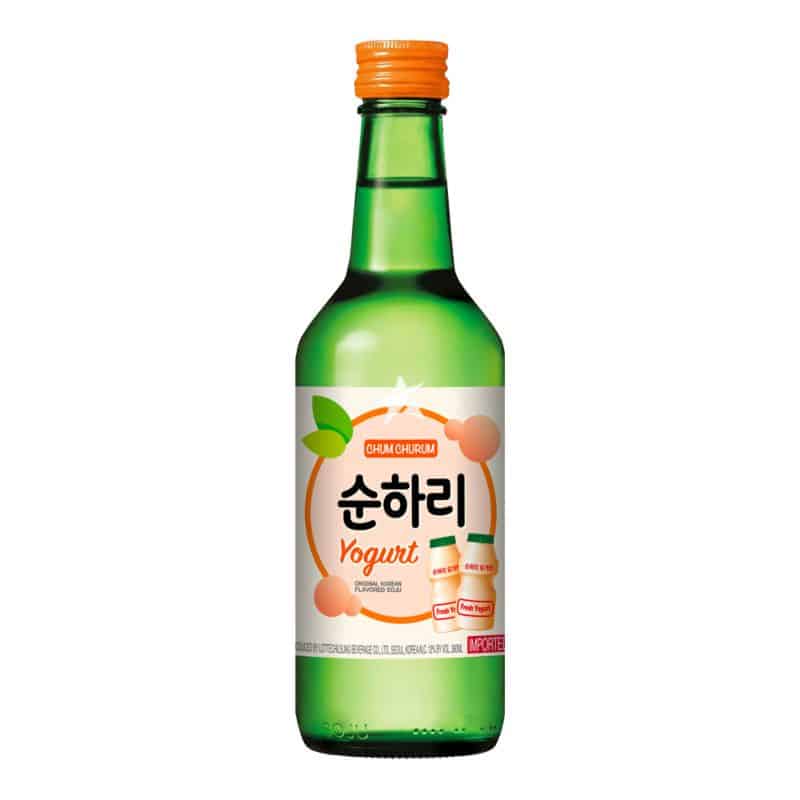
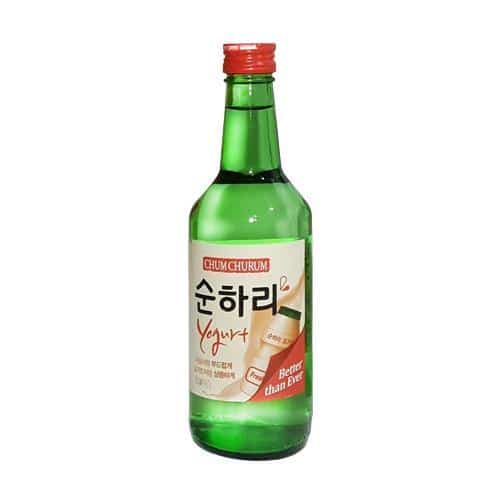
An honourable mention here for Yogurt-flavoured soju. This odd sounding yogurt soju flavour offers a unique twist on the traditional fruit soju, inspired by a popular cocktail that combines the alcohol with a yogurt drink.
Yoghurt soju has a combination of sweet, sour, and creamy flavours that results in a neutral taste, along with the characteristic lightness and crispness of soju drinks. Korean soju is a popular drink for sharing with friends and enjoying together. Yoghurt soju is typically served cold and goes well with a variety of Korean food and snacks, particularly those with a spicy flavour.
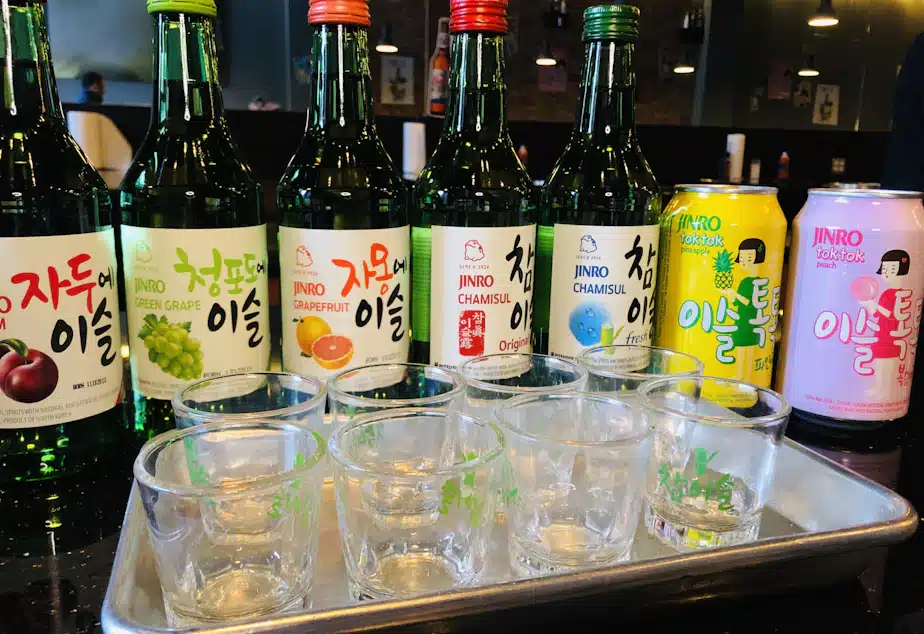
Whilst indulging in the huge range of soju flavours, it is commonly enjoyed socially, and it is customary to use a specific glass for serving soju. It is not considered proper to drink soju directly from the bottle. Therefore, it is important to know what the ideal soju glass looks like and the type commonly used in Korea.
If you are unfamiliar with soju, it is a small cup that can be held with both hands, even though it lacks a handle. This allows you to hold it properly and prevents any spills.
Small enough to hold in one hand, the standard Korean soju shot glass is 50 millilitres (ml). This is a bit bigger than shot glasses in other countries, which are more typically 25ml or 35ml.
In Korea, your soju shot glass should traditionally never sit empty. Of course, that’s difficult when the volume of a shot glass is so small.
Shot glasses are – as the name suggests – generally made of glass. While they come in other materials, such as ceramic, this is more unusual – but this can look great for decoration, and be a great way to impress your friends with an unusual glass of soju.
Traditionally in Korea, the first glass is taken as a shot, and the remainder can be sipped or shot, depending on your preference.
Of course, if you’re not in Korea, or you’re at home, you don’t need to worry so much about the tradition – but it’s definitely best to make sure you have your shot glass ready to drink it.
Once your soju is ready for drinking in its shot glass, you can drink it however you like.
The clear shot glass is the most commonly used method to consume this liquor, although there are other methods that people use to drink soju.
One of the common ways to consume soju, if you prefer not to drink it straight, is by incorporating it into cocktails. Soju can be used to create milkshakes, mixed with fruit juice, or utilised as a substitute in various traditional cocktail recipes.
These cocktails can be served in various types of glasses, such as a martini glass or a highball glass. If you’re making them at home, you don’t need any specific glassware, just what you already have in your kitchen cupboard.
As the global palette shifts towards lighter, fruit-infused spirits, soju’s portfolio of flavors has expanded significantly. Over the last decade, consumers have increasingly gravitated towards options that offer a balance of sweetness and tartness, reflecting broader trends in the beverage industry. The demand for flavors like peach, lychee, and grapefruit underscores a preference for familiar yet exotic tastes. This trend is not limited to Korea; it reflects global movements towards more approachable and mixable spirits that fit seamlessly into modern social drinking environments. Brands continue to innovate, drawing inspiration from popular fruit profiles and seasonal specialties to engage diverse audiences.
The appeal of soju’s diverse flavors lies in their adaptability to a variety of drinking occasions. Younger generations, who are more inclined towards social mingling and modern bar scenes, find fruit-flavored soju to be an appealing alternative to stronger liquors. This trend aligns with the global movement towards low-ABV cocktails and health-conscious drinking. Brands have responded by offering flavors that mirror popular global cuisines and beverages, ensuring that soju remains relevant in an increasingly competitive spirits market. With innovations like limited-edition seasonal flavors and collaborations with popular Korean celebrities, soju continues to capture consumer interest both domestically and internationally.
When considering soju as a beverage choice, it’s important to understand its health implications. Soju’s alcohol content varies, typically between 12.9% and 25% ABV, which places it lower than many other spirits. This can make it a preferred option for those seeking a less intense drinking experience. Some proponents suggest that moderate soju consumption, particularly those varieties infused with fruits, might offer certain antioxidants. However, excessive consumption can lead to typical alcohol-related health risks such as liver damage and addiction. As with any alcoholic beverage, moderation is key, and consumers should be aware of these factors when enjoying soju.
Aside from its alcohol content, soju’s nutritional profile is quite minimal, especially when compared to spirits enriched with herbs or botanicals. The simplicity of its ingredients – primarily grains and water – means that there are few added sugars or artificial additives in traditional varieties. However, the introduction of flavored soju does bring some changes, particularly in terms of sugar content. These added flavors can increase calorie intake, so it’s advisable for those monitoring their health to pay attention to serving sizes and the specific nutritional information of each variant.
In Korea, drinking soju is as much about cultural rituals as it is about the beverage itself. Shared among friends, family, or colleagues, soju drinking often follows specific social etiquettes. For instance, it’s customary to pour drinks for one another, symbolizing respect and camaraderie. The youngest at the table is typically expected to pour for the elders first, holding the bottle with both hands as a sign of deference. Soju is often consumed during meals, serving both as an accompaniment to food and a medium for fostering meaningful conversations. These traditions highlight the communal aspect of Korean dining and illustrate how soju goes beyond just being a drink, becoming an integral part of Korean social fabric.
In Korean social customs, soju’s role extends to shaping professional relationships. Business dealings and negotiations often involve shared drinks, with soju acting as a conduit to build rapport and mutual understanding. Additionally, specific drinking games featuring soju help to break the ice and foster a more relaxed atmosphere in group gatherings. These games often revolve around simple rules that promote interaction, laughter, and light-hearted competition. As soju continues to be interwoven with Korean identity, its role in both personal and professional life underscores its enduring cultural relevance.
There are numerous brands that produce soju flavours available in South Korea, with some gaining a reputation for being particularly popular. Here are some of the most well-known soju brands:
Jinro: With a market share of more than 50%, Jinro is the most popular brand of soju in South Korea. It is popular among both college students and older drinkers due to its smooth taste and low price.
Chum Churum: Another popular brand of soju known for its smooth and slightly sweet taste is Chum Churum. It is made from rice and barley and is frequently sold in a distinctive green bottle.
Chamisul: A soju brand produced by the South Korean company HiteJinro. It is the world’s most popular spirits brand. Son Hye-won, a Cross Point representative, came up with the name “Chamisul,” which means “dew” in Korean, to represent the dew on the bottles of cold soju. It is also the Korean translation of the company’s name, hanja Jin-ro.
HiteJinro: This brand is a mash-up of two popular Korean alcohol brands, Hite and Jinro. It is well-known for its refreshing flavour and is frequently served with Korean barbeque or other grilled meats.
Lotte: A well-known Korean conglomerate that manufactures a wide range of goods, including soju. Lotte soju is popular as a dessert drink due to its slightly sweet and fruity flavour.
Each soju brand in Korea offers its distinct spin on this beloved spirit. Jinro, for instance, is known for its subtle, clean taste, making it a staple in many Korean households. Chamisul, on the other hand, filters its soju through bamboo charcoal, claiming an extra purity and smoothness that sets it apart. Chum Churum often highlights its softer taste profile by emphasizing low-calorie options, appealing to the health-conscious consumer. Lotte Soju prides itself on using 100% natural ingredients, often experimenting with less traditional, exotic flavors to capture the curious drinker. With each brand promoting its unique strengths, selecting just the right soju may involve a delightful exploration across different taste sensations.
Soju is a versatile and delicious spirit that has been enjoyed for centuries in Korea and is now gaining popularity worldwide. Its traditional taste is being reinvented with the addition of actual fruit flavours, making it a great option for those who prefer a milder taste or those who want to add some sweetness to their drink.
Each fruit-flavoured variant of Soju offers a unique taste that can be enjoyed straight, mixed with other beverages, or used as a base for cocktails. From the tangy and refreshing taste of Grapefruit Soju to the juicy and refreshing taste of Watermelon, there is a soju flavour for everyone.
In terms of food pairings, fruit-flavoured Soju pairs well with a variety of dishes, especially those that are light and fresh. Its refreshing taste can complement the flavours of grilled meats, seafood, and salads, making it a great option for any occasion.
Whether you’re looking for a refreshing drink to enjoy on a sunny day or a milder alternative to other spirits, there is surely a soju flavour that you’ll enjoy. Its versatility, lower alcohol content, and delicious taste make it a perfect addition to any occasion. So why not try some of the fruit-flavoured Soju variants today and discover your new favorite drink?